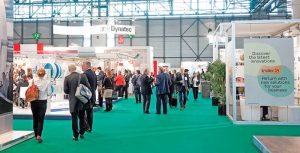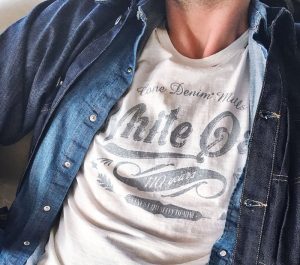 TW Special Report
TW Special Report
Protecting The Brave At Home
Workers shouldn’t have to live in fear of workplace safety hazards. Safety concerns — the potential of an arc flash or flash fire for example — can be both distracting and off-putting, leaving workers focused more on the potential for disaster than the work at hand. Enter textile industry innovators.
“Americans couldn’t perform in their daily lives without the use of innovative, special-use textiles,” said Rich Lippert, director of business development, protective market at Glen Raven, N.C.-based Glen Raven Inc. “As an industry, we look for opportunities to produce items that push the current level of technology, giving industrial workers an end product that is functional, safe and comfortable.”
Prior to 1973, workers in the utilities, oil and gas, and manufacturing industries typically wore cotton or polycotton uniforms, leaving them vulnerable to hazards like energized electrical equipment, combustible dust and active hydrocarbon zones. Once flame-resistant (FR) garments entered the picture, and were later required as personal protection equipment (PPE), worker safety was dramatically improved.
“When FR garments were initially introduced, arc flash-rated workwear provided minimum level protection and was not comfortable or durable,” said Lippert. “Now, the industry is able to provide superior protection with lighter-weight, longer-lasting materials that can withstand a 10-12 hour workday. The apparel is comfortable, breathable and abrasion resistant.”
One such product is Glen Raven’s GlenGuard FR 5.3 oz., a lightweight alternative to bulky PPE. GlenGuard is made with solution-dyed meta-aramid fibers that are fade-resistant and can withstand multiple runs through an industrial washing machine. This innovative solution is the foundation of FR apparel by Workrite Uniform Co., a subsidiary of the leading workwear provider Williamson-Dickie.
“In addition to durability and practicality, workers asked for more comfortable, transitional clothing – adaptable apparel that makes working in high temperatures and in a variety of settings easier,” said Lippert. “We understand those end user requirements, and we’ve produced something that’s indistinguishable from what people wear everyday. The clothing feels the same as what they would wear to watch a football game or play golf.”
 In spring 2015, workers in Eagle Ford Shale, Texas, tested GlenGuard uniforms during a rig move. The apparel’s protection, flexibility and breathability helped them set up oil platforms and move enormous cranes across numerous platforms in 85-degree heat.
In spring 2015, workers in Eagle Ford Shale, Texas, tested GlenGuard uniforms during a rig move. The apparel’s protection, flexibility and breathability helped them set up oil platforms and move enormous cranes across numerous platforms in 85-degree heat.
Lippert believes GlenGuard is only the beginning. Through innovative research and collaboration with firms like Workrite Uniform, Glen Raven hopes to push the envelope, in turn creating a ripple effect throughout the industry.
“At the end of the day, creating products that ensure the safety of hardworking Americans is what it’s all about,” Lippert said. “If we can create a product that better protects our friends, family and neighbors from potential workplace disasters, we’re going to do it.
Protecting The Brave Abroad
Resiliency, ingenuity and trust: these are words that describe the long-standing, symbiotic relationship between the American textile industry and the U.S. armed forces.
In 2014, the U.S. military paid the textile industry $1.5 billion for 8,000-plus textile items. During more active engagement in Iraq and Afghanistan, spending increased to more than $2.2 billion. Textile companies across the country deliver a range of products from ballistic fabric body armor material to lightweight camouflage systems for tents, tanks and military structures.
“The industry is constantly working to strike a balance between what’s economical and what’s the best, safest product,” said Mia Hill, industrial business manager at Glen Raven. “Military products are far from an ordinary piece of fabric. They’re a protective system that has to be ready for any situation a soldier may face.”
Greenwood, S.C.-based Greenwood Mills, which recently celebrated 126 years of business, supplies fabrics to the U.S. military, protective clothing and specialty industrial markets. The brand strives to produce materials that protect soldiers from biological and chemical agents, as well as extreme weather.
“Investing in research and technology is imperative. R&D makes it possible for us to bring new, innovative, smart textiles to the ever-changing needs of the soldier,” said Jay Self, president of Greenwood Mills. “During the First Gulf War, soldiers found that sand cut through 100 percent cotton material; so, we devised a more durable nylon cotton blend that can withstand desert environments. The material is still used today.”
Additionally, the textile industry is evolving to meet military weight requests. Producers are cognizant of the many items a soldier has to carry in the battlefield — backpack, weapons system, bulletproof vest, helmet and more — and are working with top military researchers to create lighter-weight products that don’t compromise on integrity.
“More efficient equipment allows us as soldiers to focus not on ourselves, but rather the most important part of our work, the mission at hand,” said Philip Tonseth, West Point graduate and second lieutenant in the U.S. Army. “The Armed Forces operate in a multi-threat world, and any advantage that our equipment can provide is not only appreciated by the soldier, but is also necessary for success.”
Companies like Greenwood Mills and Glen Raven are doing just that – protecting committed soldiers from all kinds of threats. Greenwood Mills specifically engineers material for each branch of the military. For example, Marine uniforms are treated with insect repellent, and flame-resistant uniforms protect those facing the risk of IEDs. Glen Raven produces an ultra-lightweight camouflage system (ULCANS) that not only hides military structures from the naked eye, but also deflects plane radar systems.
“An immense amount of passion and ingenuity are poured into each and every military textile creation. The immediate post-9/11 years are a perfect example; during that time, textile workers labored 13 of every 14 days to ensure enough military fabric was available,” said Self. “The textile community expresses its admiration and support through production — it’s why we work tirelessly to provide our soldiers with the safest, most reliable, most advanced textiles on the market.”
Editor’s Note: This article appears in Textile World courtesy of the National Council of Textile Organizations (NCTO) as part of the “American Textiles: We Make Amazing™” campaign. NCTO is a trade association representing U.S. textile manufacturing. Please visit ncto.org to learn more about NCTO, the industry and the campaign.
January/February 2017
 Canada-based technical textiles trade show celebrates its 15th year in 2017.
Canada-based technical textiles trade show celebrates its 15th year in 2017.







